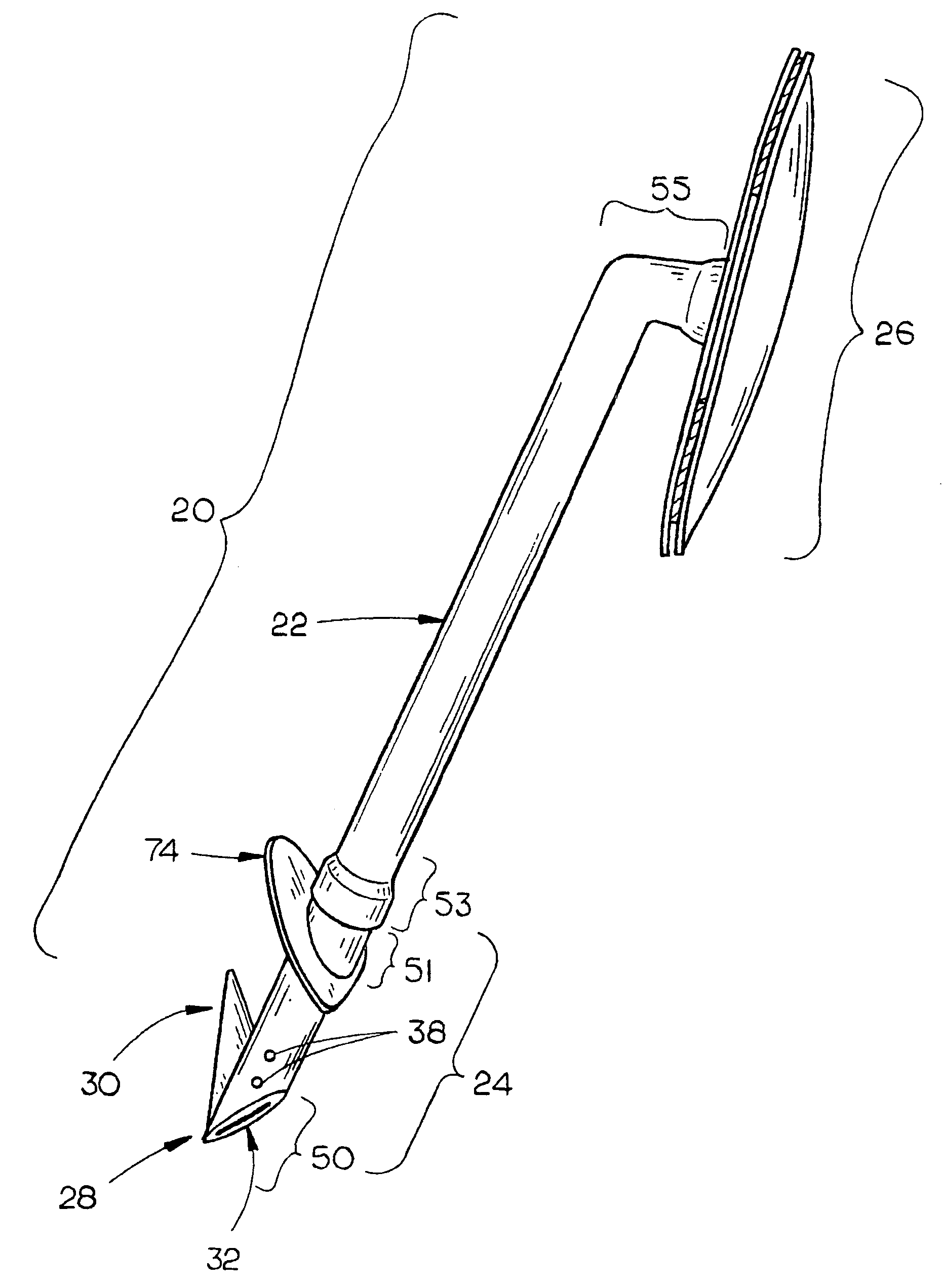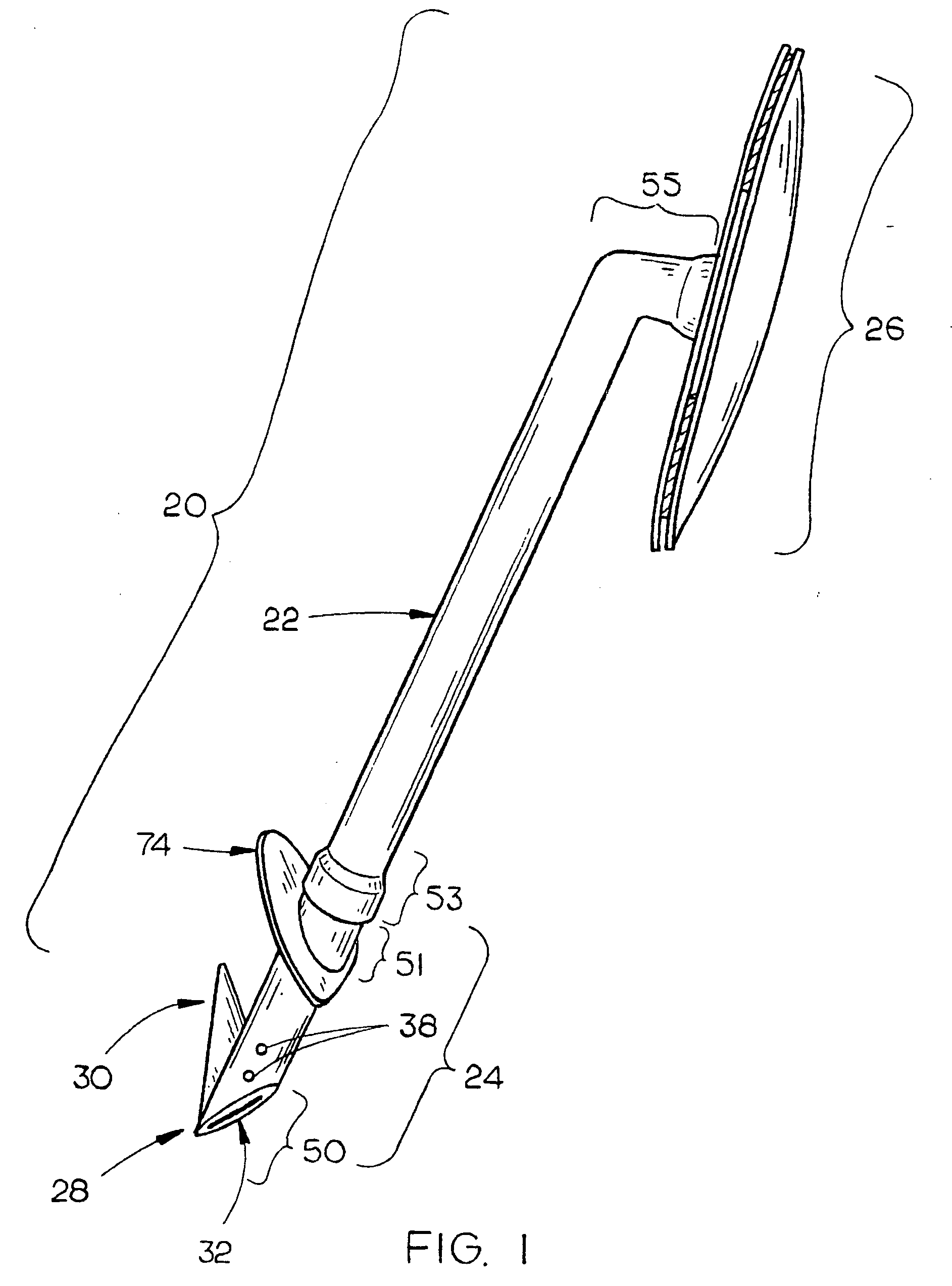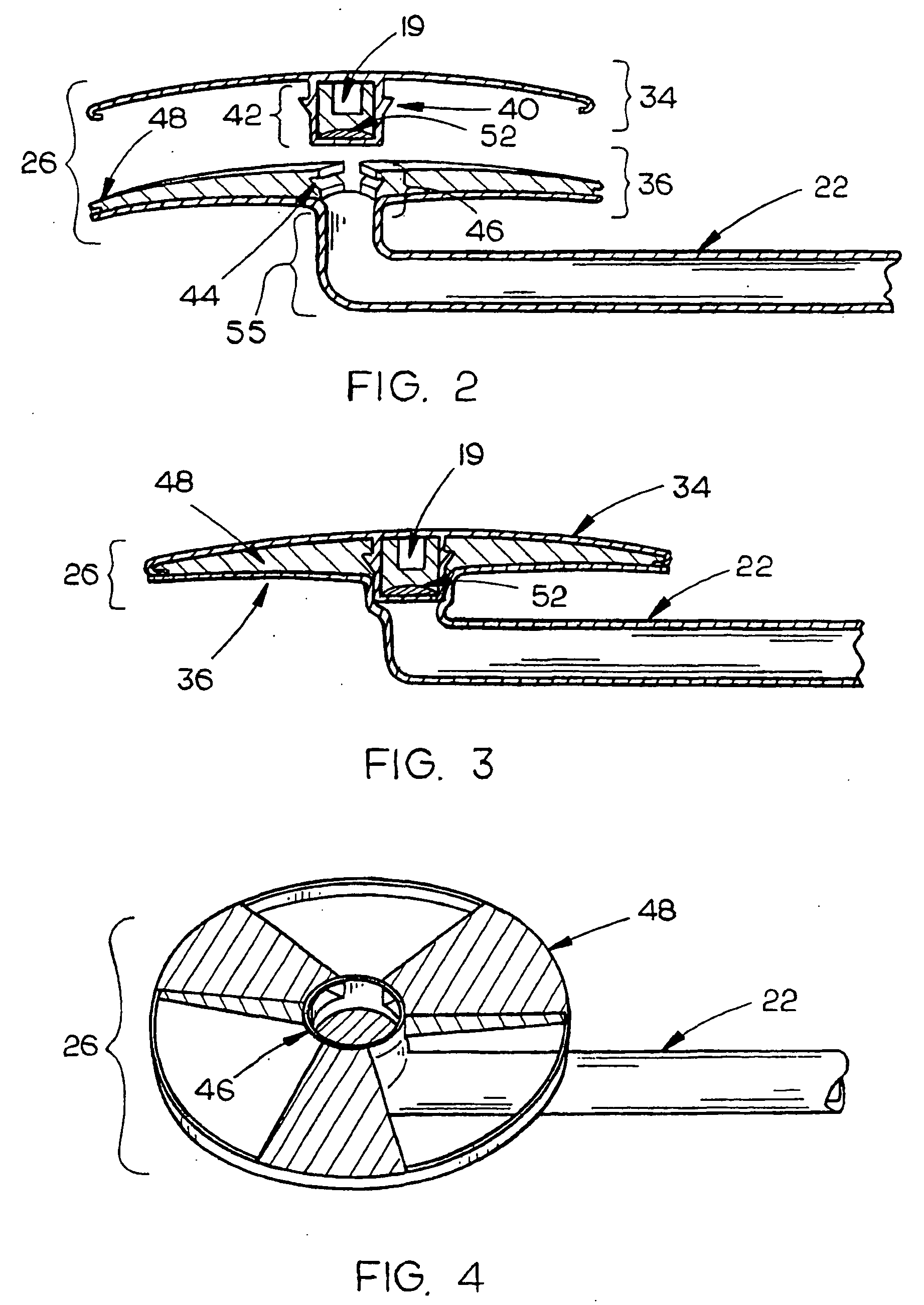Method and apparatus for reducing intraocular pressure
a technology of intraocular pressure and apparatus, applied in the field of medical technology, can solve the problems of aqueous humor not draining properly, excessive intraocular pressure is a major risk factor for glaucoma, and the loss of vision is gradual, so as to prevent infection
- Summary
- Abstract
- Description
- Claims
- Application Information
AI Technical Summary
Benefits of technology
Problems solved by technology
Method used
Image
Examples
Embodiment Construction
[0032] The present invention provides for a method and apparatus to direct aqueous humor from the anterior chamber of an eyeball to the external surface of the eyeball as a means to predictably regulate intraocular pressure and treat glaucoma. An embodiment of a drainage apparatus 20 according to the present invention is illustrated in FIG. 1. As shown in FIG. 1, the drainage apparatus 20 comprises an inlet assembly 24 having a first end 50 and a second end 51, a tube 22 capable of conducting aqueous humor having a first end 53 and a second end 55, and an outlet assembly 26.
[0033] The inlet assembly 24 is further comprised of a beveled tip 28 formed at the first end 50 of the inlet assembly 24, and an insertion plate 74 formed near the second end 51 of the inlet assembly 24. An opening 32 is formed through the inlet assembly 24 allowing aqueous humor to flow through the inner lumen of the inlet assembly 24. An anchor 30 may also be formed near the first end 50 of the inlet assembly...
PUM
 Login to View More
Login to View More Abstract
Description
Claims
Application Information
 Login to View More
Login to View More - R&D
- Intellectual Property
- Life Sciences
- Materials
- Tech Scout
- Unparalleled Data Quality
- Higher Quality Content
- 60% Fewer Hallucinations
Browse by: Latest US Patents, China's latest patents, Technical Efficacy Thesaurus, Application Domain, Technology Topic, Popular Technical Reports.
© 2025 PatSnap. All rights reserved.Legal|Privacy policy|Modern Slavery Act Transparency Statement|Sitemap|About US| Contact US: help@patsnap.com



